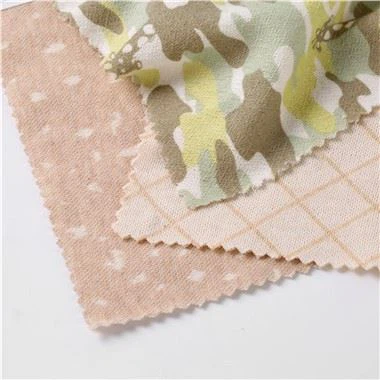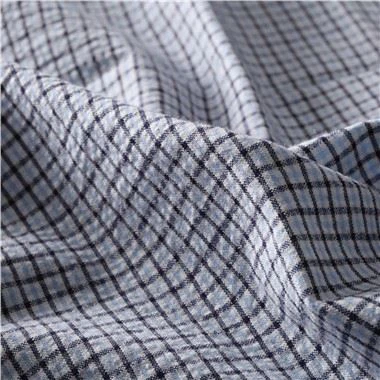What is Spunlace Nonwoven Fabric?
Apr 09, 2025
Definition and Basic Concept of Spunlace Nonwoven Fabric
Spunlace nonwoven fabric, also known as hydroentangled nonwoven fabric or water-jet nonwoven fabric, is a type of nonwoven material formed by entangling fibers in a web using high-pressure fine water jets. This technology mimics the principles of spider web spinning and silkworm silk production in nature, utilizing the force of water rather than traditional needle punching or chemical bonding to consolidate fibers into fabric.
Compared to conventional textile processes, the spunlace method eliminates complex steps such as spinning and weaving, directly forming fiber webs into fabric through hydraulic entanglement. Due to its unique physical properties and eco-friendly characteristics, spunlace nonwoven fabric has become one of the fastest-growing and most widely used varieties in the nonwoven family, with global annual production exceeding 1 million tons and a sustained growth rate of 8-10% per year.


Spunlace nonwoven fabric Spunlace nonwoven fabric
Production Process of Spunlace Nonwoven Fabric
Fiber Raw Material Preparation
Spunlace nonwoven fabric can be made from various fiber materials, including natural fibers (such as cotton, wood pulp, and hemp) and synthetic fibers (such as polyester, viscose, and polypropylene). The raw materials undergo pre-treatment processes like opening and blending to ensure uniform fiber dispersion.
Web Formation
The fibers are formed into a web through either dry-laid (carding) or wet-laid (similar to papermaking) processes. Dry-laid webs yield higher-strength products, while wet-laid webs are more suitable for producing lightweight and uniform nonwoven fabrics.
Pre-Wetting Treatment
The fiber web is initially pre-wetted with low-pressure water jets. This step enhances the efficiency of subsequent high-pressure hydroentanglement and reduces energy consumption.
Hydroentanglement
The core process involves using high-pressure water jets (100-250 bar) with specially designed nozzles (aperture 0.08-0.2 mm) to repeatedly impact the fiber web. The water streams cause the fibers to displace, twist, and entangle, forming a three-dimensional network structure.
Dehydration and Drying
Excess water is removed, and the fabric is dried using hot air or drum drying equipment to ensure the moisture content meets standard requirements.
Finishing Treatment
Depending on the intended application, additional treatments such as printing, coating, antibacterial, or antistatic processing may be applied. Finally, the fabric is rolled, slit, and packaged as finished products.
Outstanding Characteristics of Spunlace Nonwoven Fabric
1. Excellent Physical Properties
- Softness and Comfort: The fiber entanglement method preserves the natural flexibility of fibers, offering a texture similar to traditional textiles.
- High Strength and Durability: Balanced strength in both machine and cross directions, with dry strength reaching 30-60N/5cm and high wet strength retention.
- Superior Breathability: Porosity exceeds 80%, with air permeability surpassing 1000L/m²·s.
- Low Pilling and Linting: Firm fiber entanglement minimizes fuzz and pilling during use.
2. Stable Chemical Properties
- Chemical Binder-Free: Pure physical entanglement eliminates risks of chemical residues.
- Excellent Liquid Absorption: Rapid absorption and retention, capable of holding 10-15 times its own weight in liquid.
- Chemical Resistance: Depending on fiber composition, it can withstand acids, alkalis, and organic solvents.
3. Hygienic and Eco-Friendly Advantages
- Sterilization Compatibility: Resistant to various sterilization methods, including gamma irradiation and ethylene oxide.
- Good Biocompatibility: Medical-grade products pass biological tests such as cytotoxicity and skin irritation assessments.
- Biodegradability: Natural fiber-based products degrade naturally in the environment, meeting eco-friendly standards.
The main application fields of spunlace nonwoven fabric
1. Medical & Healthcare Sector (45% of total spunlace fabric usage)
- Medical protective products: surgical gowns, masks, caps, etc.
- Wound care materials: wound dressings, hemostatic materials, medical gauze.
- Medical consumables: disinfecting wipes, alcohol pads.
- Hospital supplies: disposable bed sheets, pillowcases.
2. Personal Care Sector (30%)
- Hygiene products: baby wipes, makeup remover cotton pads.
- Beauty products: facial mask substrates, cosmetic cotton pads.
- Adult incontinence products: surface layer materials.
3. Household & Cleaning Sector (15%)
- Household cleaning wipes.
- Premium dust cloths & dishcloths.
- Furniture care products.
4. Industrial Applications (10%)
- Electronics: precision instrument cleaning wipes.
- Automotive: interior materials.
- Filtration: substrate for filter materials.
- Synthetic leather: base fabric.
Development Trends of Spunlace Nonwoven Fabric
- Material Innovation: Development of eco-friendly materials such as biodegradable PLA fibers and bamboo fibers, with bio-based content increasing to over 60%.
- Process Upgrades: Adoption of bicomponent fibers and nanofiber composite technology to produce ultra-fine spunlace products (0.1 denier).
- Functional Expansion: Integration of antibacterial, flame-retardant, and conductive properties, as well as smart responsive spunlace materials.
- Application Expansion: Penetration into high-end industries such as aerospace and new energy battery separators.
- Green Production: Water recycling rate exceeding 95%, with water consumption per ton reduced to below 20m³.
With technological advancements and stricter environmental regulations, spunlace nonwoven fabric is evolving toward high performance, multifunctionality, and sustainability. The global market size is projected to exceed $15 billion in the next five years, making it a key growth driver in the nonwoven industry.







